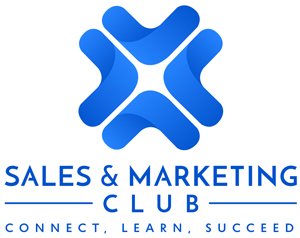“Success in sales doesn’t come from closing deals. It comes from helping customers succeed.”
— Unknown
Navigating the sales funnel is akin to guiding a journey—from initial awareness to final commitment. Each stage requires a nuanced approach to closing, balancing empathy, understanding, and strategic finesse. By mastering tailored techniques for each phase, sales professionals can build trust, foster engagement, and ultimately drive conversions.
1. Awareness Stage: Capturing Interest and Building Trust
In the awareness stage, prospects are identifying challenges and seeking information. Your goal is to establish credibility and spark curiosity without overwhelming them.
1.1. Soft Closing: Inviting Engagement
Soft closing gently encourages prospects to take small steps forward, nurturing their interest.
Offer Valuable Content
Provide insightful resources that address their pain points.
- Example: “I have a whitepaper that explores how businesses like yours can streamline operations. Would you like me to send it over?”
Request Minimal Commitment
Encourage low-risk actions to keep them engaged.
- Example: “Join our newsletter for industry insights and updates. It’s quick and easy to sign up.”
1.2. Educational Closing: Sharing Knowledge
Educational closing aims to inform prospects about industry trends and potential solutions.
Host Webinars and Workshops
Provide platforms for learning and interaction.
- Example: “Our upcoming webinar covers strategies for boosting online presence. Would you be interested in attending?”
Showcase Case Studies and Testimonials
Highlight success stories to build credibility.
- Example: “Here’s a case study of how a similar company improved efficiency by 40% using our solution.”
1.3. Exploratory Closing: Encouraging Discovery
Exploratory closing invites prospects to explore solutions independently.
Create Interactive Tools
Offer quizzes or assessments to help them identify needs.
- Example: “Take our quiz to discover which of our services align best with your business goals.”
Personalize Recommendations
Tailor content based on their interests and preferences.
- Example: “Based on your recent activity, I recommend checking out our guide on optimizing customer engagement.”
2. Interest Stage: Deepening Engagement and Building Desire
In the interest stage, prospects are actively evaluating solutions. Your focus is on nurturing their interest and positioning your offering as the best solution.
2.1. Assumptive Closing: Guiding Towards Commitment
Assumptive closing subtly guides prospects towards the assumption of making a purchase.
Discuss Next Steps
Outline the implementation process as a natural progression.
- Example: “Once you decide to move forward, we’ll schedule a personalized onboarding session to get you started.”
Offer Trial Periods
Provide opportunities for prospects to experience your product.
- Example: “Let’s set you up with a 30-day trial so you can see the benefits first-hand.”
2.2. Urgency Closing: Creating Momentum
Urgency closing instils a sense of urgency to prompt quicker decisions.
Present Limited-Time Offers
Highlight time-sensitive benefits to motivate action.
- Example: “Our current promotion ends this week. Would you like to take advantage of the 20% discount?”
Emphasize Scarcity
Highlight limited availability to encourage prompt decision-making.
- Example: “We have a few spots left for our exclusive workshop next month. Shall I reserve one for you?”
2.3. Reciprocity Closing: Building Mutual Value
Reciprocity closing fosters goodwill by offering something valuable upfront.
Provide Free Trials or Samples
Allow prospects to experience your product before committing.
- Example: “Here’s a complimentary trial of our software. I’d love to hear your thoughts after trying it out.”
Offer Exclusive Content or Consultations
Provide access to specialized resources or expert advice.
- Example: “Let’s schedule a personalized consultation to discuss how our solutions can address your specific needs.”
2.4. Comparison Closing: Demonstrating Value Proposition
Comparison closing showcases your product’s unique advantages over competitors.
Use Feature Comparisons
Highlight key features and benefits through direct comparison.
- Example: “Here’s how our solution’s integration capabilities surpass those of our competitors.”
Offer ROI Calculators
Quantify the potential return on investment to illustrate value.
- Example: “Use our ROI calculator to estimate the savings and efficiencies our solution can deliver.”
3. Decision Stage: Securing Commitment and Closing the Deal
In the decision stage, prospects are ready to commit. Your role is to address final objections and facilitate a smooth transition to purchase.
3.1. Direct Closing: Asking for the Sale
Direct closing involves straightforwardly seeking commitment.
Present Proposal or Contract
Outline terms clearly and ask for their agreement.
- Example: “Here’s the proposal detailing our agreed terms. Are you ready to move forward with this?”
Use Definitive Questions
Ask questions that prompt a clear decision.
- Example: “Shall we proceed with processing your order today?”
3.2. Alternative Choice Closing: Offering Flexibility
Alternative choice closing provides options to guide prospects towards a positive decision.
Present Package Choices
Offer different service levels or packages to suit their needs.
- Example: “Would you prefer our standard package or the premium option with additional features?”
Provide Service Level Options
Allow prospects to choose the level of support they prefer.
- Example: “We offer both basic and advanced support plans. Which would you like to go with?”
3.3. Summary Closing: Reinforcing Value
Summary closing reinforces the benefits and terms to solidify their decision.
Recap Key Benefits
Highlight the main advantages of choosing your solution.
- Example: “To summarize, our solution offers cost savings, efficiency improvements, and personalized support.”
Review Agreement Details
Ensure clarity by reviewing terms and conditions.
- Example: “Let’s review the contract together to make sure everything meets your expectations.”
4. Post-Sale Stage: Building Relationships and Ensuring Satisfaction
The post-sale stage focuses on nurturing relationships, ensuring customer satisfaction, and fostering loyalty.
4.1. Follow-Up Closing: Maintaining Connection
Follow-up closing involves staying in touch to support and gather feedback.
Schedule Check-In Calls
Reach out to see how they’re settling in and if they need assistance.
- Example: “I wanted to check in on how you’re finding our service. Is there anything I can help you with?”
Offer Usage Tips and Support
Provide tips to optimize their experience with your product.
- Example: “Here are some best practices to help you maximize the benefits of our software.”
4.2. Upsell and Cross-Sell Closing: Adding Value Over Time
Upsell and cross-sell closing introduces additional products or services that complement their initial purchase.
Suggest Complementary Products
Recommend related items or upgrades based on their needs.
- Example: “Many of our clients find our advanced analytics module enhances their data insights. Would you like to learn more?”
Offer Bundled Packages or Discounts
Provide incentives for expanding their service.
- Example: “Bundle our software with our maintenance package for added savings and support.”
4.3. Loyalty and Advocacy Closing: Turning Customers into Ambassadors
Loyalty and advocacy closing aims to turn satisfied customers into loyal advocates.
Introduce Referral Programs
Encourage satisfied customers to refer others with incentives.
- Example: “Know someone who could benefit from our services? Refer them to us and receive a discount on your next purchase.”
Engage in Customer Community Activities
Invite customers to join communities or events to foster engagement.
- Example: “Join our exclusive user group to connect with other industry professionals and share insights.”
Conclusion: Elevating Your Closing Strategies
Closing deals isn’t just about signing contracts; it’s about guiding prospects through a journey of discovery, understanding their needs, and building lasting relationships. By mastering these closing techniques at each stage of the sales funnel, you can create meaningful connections, address concerns effectively, and ultimately achieve higher conversion rates and customer satisfaction.
Remember, successful closing requires empathy, active listening, and a genuine commitment to helping prospects achieve their goals. By focusing on these principles and adapting your approach to fit the unique needs of each prospect, you can elevate your sales performance and establish your reputation as a trusted partner in their success journey.


















